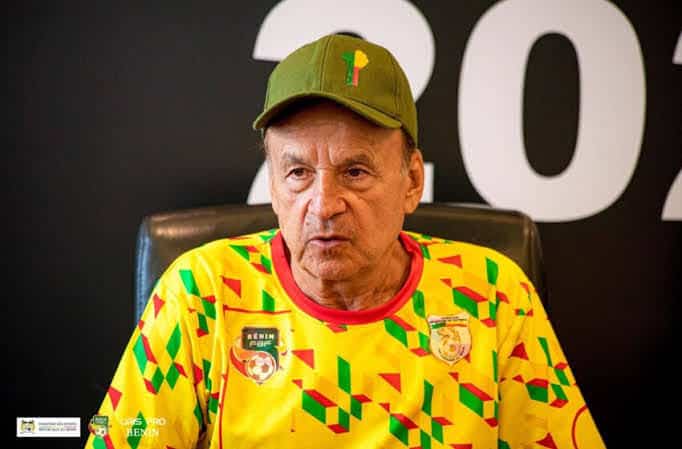I was drawn to this book almost instantly by its title – Writing for Media and Monetising It. Azu Ishiekwene, the author, and I have been colleagues and friends for decades. We have spent more or less the same stretch of time in this business of reporting and analysing society and other people’s lives and times, and here comes Azu sending me a book in which he talks about how our hustle can be monetised.
Is there something Azu knows that I don’t know? And in this our business of being friends, he has been making money on top of our heads and keeping the secret to himself until now that he thinks he can share some of the tips?
Has he been keeping secrets? The speed with which I rushed into the book to use a common phrase is imaginable. My discovery is that the title is misleading. Azu is a vintage, tested editor, a master of headlines-casting and crafting – something he has done for over 30 years. He got me hooked.
He gets you into the story with a catchy title and leads you on. He knows the game. So, catch the reader’s attention, a precious commodity in journalism and then peel the story, layer by layer in an onion-peeling fashion. In terms of procedure, this is what Azu Ishiekwene does in this book.
For the benefit of the ordinary enthusiast, journalism is not a money-making machine for the reporter, the editor, the producer or the cameraman, especially in a country like Nigeria where, due to the general dispossession of the economy, media owners are struggling to pay salaries, the business environment is hostile, and there is no deliberate, informed and conscious effort on the part of the government to connect culture to the development process and provide necessary incentives.
Even in other countries where cultural policy appropriately centres on mass media and the freedom of information, journalism is a profession driven by commitment, the urge to be heard and to make a difference, and a readiness to learn and re-learn continuously. This is the actual thrust of this publication.
Nonetheless, Samuel Johnson, in a famous self-deprecatory statement, once said, “No one but a blockhead ever wrote except for money… but his art.” Pablo Picasso, the painter, said he did not want to be saddled with material worries “like a pauper”. He wanted a lot of money. It is not only Picasso to whom money appeals; we all want money, but Azu Ishiekwene’s Writing for Media and Monetising It, is more than that: he strikes a balance between opportunities available to the writer in the age of digital adaptation, but this is more a book about the art and craft of journalism itself in an age of transition, covering a broad range of issues: personal development, voice and style, impact writing, the law, managing the social media and its discontents, journalism in the age of Artificial Intelligence, branding and self-reinvention.
The book is enriched by the many voices that it projects: this is not just Azu Ishiekwene speaking to us; we are offered examples and the voices of other journalists across the spectrum of print and social media, making the book all the more relatable, delivered in a classic, precision writing style. Azu writes in an economic fashion; his style is concise.
It is most refreshing to hear the voices in this book, across generations of the likes of Farooq Kperogi, Sam Omatseye, Fisayo Soyombo on social media responses, and how to manage feedback and trolls (Chapter 8, at pp. 71 – 76); Abimbola Adelakun and Ruona Meyer on branding (Chapter 12, at pp. 110 – 117); the examples of Linda Ikeji, Abdusalam Idris, Tunde Ednut and Adeola Fayehun (Chapter 13 – Making Money, at pp. 125 -128); Professor Toyin Falola and Tunde Odediran on self-reinvention (Chapter 14, at pp. 141 – 151), and the more extensive conversation with Dele Olojede and Toyosi Ogunseye in Chapter 15 titled: “In life, luck – and God matter” focusing on “two icons, different journeys”. The book is 259 pages long, with 15 Chapters and one appendix.
The book does not cover the subject of ethics – an oversight in my view, given the many issues about rights, wrongs and professionalism in contemporary journalism practice, and how ethical issues are constantly foregrounded in the media ecosystem, and whereas the book closes with an appendix, viz: the Competition and Consumer Act of Australia 2021, there could have been a longer reflection on media content and legislation in Nigeria given the big challenge that this also currently poses as well.
But I must say that this is a book that I have enjoyed very much and thoroughly too. One of my pet worries has been the de-linkage between the universities and polytechnics, raising questions about journalism teaching in Nigeria, particularly the curriculum. In other jurisdictions, those who teach in journalism schools are mostly persons who have been experienced practitioners, leading award winners and writers who are on the faculty because they know and have been in the rough and tumble field of practice.
This is not necessarily the case in Nigeria. I stand to be corrected, but I dare say most of the scholars who teach journalism in most of our institutions of higher learning are persons who have all the degrees, but they have never been in a newsroom or have ever had a microphone pinned to their chests.
Many of them have never even written a letter to the editor worthy of publication, and yet they churn out students who are very smart at quoting Marshall McLuhan and a long list of dead theorists, but they can’t write a paragraph, nor do they know a story when they see it. Their teachers do not know any better.
Azu Ishiekwene’s book wakes me afresh to this worry and the fact that the book serves an important purpose. It is written by a practitioner who has risen to the very top in the practice, offering tutorials to the would-be journalist and the old hand who needs to re-invent and adapt. Our journalism schools in Nigeria are too far away from the field. Journalism should be taught by those who have been on the field, and perhaps the same principle should be applied in other professions as well, to establish the proper linkage and transition between school and the world of work.
Azu Ishiekwene, the author of this book, was once a part-time volunteer lecturer of journalism at the University of Lagos and the Nigeria Institute of Journalism, Ogba, Lagos. So, it’s not always about the money. It is his type that should be teaching the art of writing and journalism, and that is precisely what he does in this work: adding to the bibliography the desirable linkage between the town and gown, between theory and practice.
In this regard, this book acquires yet another significance. It is standard practice elsewhere for accomplished journalists to write and publish, to move beyond the limitation of the newsroom, and to document their experiences, observations, and reflections in a permanent form.
They transmute from persons who capture history in a hurry into authors who write history about society, individuals and the practice itself. This is refreshingly a growing trend in Nigeria, and it should be encouraged, with journalists putting their thoughts and experience in more permanent form. Before now, Azu Ishiekwene had published The Trial of Nuhu Ribadu. This, then, is his second offering in this line of business. He belongs, beyond the newsroom in the enterprise in the class of an emergent/emerging class of Nigerian journalist-authors – to name a few: Akogun Tola Adeniyi, Chief Olusegun Osoba, Ray Ekpu, Dan Agbese, Dr. Yemi Ogunbiyi, Sonala Olumhense, Olatunji Dare, Dele Olojede, Dare Babarinsa, Kunle Ajibade, Olusegun Adeniyi, Sam Ndah-Isaiah, Sunday Dare, Bolaji Abdullahi, Waziri Adio, Akpandem James, Sina Oladeinde, Okey Ikechukwu, Magnus Onyibe, Dele Momodu, Lasisi Olagunju, Azuh Arinze, Simon Kolawole, Muskiliu Mojeed, Wale Adedayo, Sina Kawonise, Festus Adedayo, Abimbola Adelakun… quite a long list as it were, reiterating the links between journalism and authorship, academia and practice, and how in reality the cross-fertilisation enriches an on-going conversation about the human enterprise.
Writing for Media and Monetising It is essentially conceived as a training manual for the young journalist or writer and a refresher manual for the older hand at the craft who is caught between the old and the new in a season where innovations and phenomena constantly change at the speed of light due to the intense and form-changing patterns enabled by technical reproduce-ability in all spheres of human endeavour.
Azu Ishiekwene covers, to borrow legalese, the field, providing us with the equivalent of a Master Class, a Ted Talk in print about journalism – its tone, tint and shape in today’s world. His submissions are rooted in his print background and the transformations he and others have experienced in the context of media practice in the age of convergence.
The print journalist of old who wrote long-hand in the newsroom or sat in a corner somewhere, monitoring the radio, or functioned, or got his message across with the help of a typist does not belong in this new age. The character of the newsroom has changed. The production process has been transformed by technology.
Using his own personal experiences and newsroom narratives, Ishiekwene captures the image of a newsroom in transition and how the modern journalist, in a digital age, must learn the new tricks of practice. Peter F. Drucker, a management scientist, wrote that innovations and adaptability are two factors central to the survival of business.
Ishiekwene provides lessons in adaptation, with useful tips about how a journalist can think like an entrepreneur and enhance his trade and skills. But he begins with tips about the very nature of the trade itself, and he is very practical about his submissions, providing in every chapter a summary and a reading list after the fashion and standard of training manuals.
This is a book, all things considered, by a master practitioner advising the young and the old about the how of our trade; hence, the chapters offer advice about how a writer/journalist can find his or her voice and the importance of originality and feedback; how to find a subject to write about, style and its elements, how to find and use resources, make impact, avoid stepping on the wrong side of the law, how to manage feedback and trolls in a season dominated by the sheer, unavoidable democratisation of the media space, which has turned every citizen into a journalist, blurring the lines literally.
Only about three chapters in the book, out of 15, deal directly with making money and certainly not in the sense that making money has become a base affliction in Nigeria. Ishiekwene writes about Syndication (Chapter 10), Writing for Global Audiences (Chapter 11) and Branding Your Content (Chapter 12), but the kind of money this journalist writes about may not even be earned without contacts, distinctive practice, skills and ability.
I find particularly noteworthy the author’s reflections on how the emergence and impact of social media and Artificial Intelligence has disrupted the practice. The predicted death of the newspaper, like the predicted death of the author, has not occurred – what has changed is the mode of practice and the pressing impact of new forms.
This author does not preach against change, rather, he encourages adaptation and innovation, two values at the centre of modern convergence. A big takeaway is that the journalist – aspiring or old – must read and learn new ideas, new turns of phrase, style, and trends. “Reading maketh the man”, says Francis Bacon, and in this book, the author signposts the value of reading without necessarily showing off. It remains for the public to read his book too.
I recommend Writing for Media and Monetising It as a useful text that should become part of the teaching curriculum in Nigerian schools of journalism and as a handy text for the practitioner who needs to be reminded of basic ideas in this troubled age when the newsroom is increasingly populated by an emerging crowd of tyros who can hardly put a sentence together.
The book is published by Premium Times Books, an online media company, which in Nigeria is a comforting reminder of the vast possibilities of convergence. Finally, this is an eminently readable book. I urge you all to get a copy and read it.
Abati is a journalist, columnist and ARISE News TV anchor

 4 months ago
27
4 months ago
27















 English (US) ·
English (US) ·